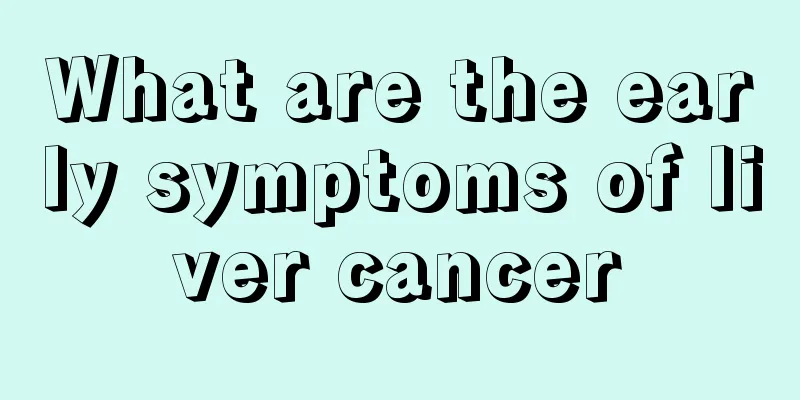What are the symptoms of cerebral blood vessel obstruction

|
The human brain is the most important because it controls other organs. However, blood diseases are very serious, especially cerebrovascular diseases, which are caused by dietary reasons or complications from other diseases. It usually causes cerebrovascular disease. The blockage of cerebral blood vessels is caused by blood clots. If you eat fish and meat for a long time, it is easy to cause blood clots. But what are the symptoms of cerebral vascular obstruction? Cerebrovascular obstruction, also known as cerebral thrombosis, refers to the formation of blood clots due to pathological changes in the walls of arteries supplying the brain inside and outside the skull, caused by slow blood flow, changes in blood composition or increased blood viscosity, leading to vascular occlusion. If it is not too serious and is treated properly, it can be cured. The most common cause of cerebral vascular blockage (cerebral thrombosis) is atherosclerosis, and diabetes, hyperlipidemia and hypertension can accelerate its development. This disease is more common in elderly people over 50 to 60 years old with arteriosclerosis. In your daily diet, you should pay special attention to eating less salt, light food, more vegetables, less animal meat, and more fish. symptom (1) General symptoms: This disease is more common in elderly people over 50 to 60 years old with arteriosclerosis, some of whom have a history of diabetes. Symptoms often occur when the patient is at rest or sleeping, and gradually reach a peak within 1 to 3 days. Some patients have had one or more transient ischemic attacks before the onset of the disease. Except for severe cases, symptoms gradually reach a peak within 1 to 3 days, consciousness is usually clear, and there is no obvious increase in intracranial pressure. (ii) Localized neurological symptoms of the brain: They vary greatly and are related to the degree of vascular occlusion, the size and location of the occluded blood vessels, and the quality of the collateral circulation. 1. Internal carotid artery system. (1) Internal carotid artery system: Hemiplegia, hemisensory disturbance, hemianopsia and psychiatric symptoms are the most common. The dominant half of the lesion also has varying degrees of aphasia, apraxia and agnosia. There is also primary optic atrophy on the lesion side, characteristic blindness of the affected eye accompanied by contralateral hemiplegia called crossed amaurosis, Horner's sign, oculomotor nerve palsy, and decreased retinal artery pressure. (2) Middle cerebral artery: the most common. When the main trunk is blocked, there will be three hemiplegia symptoms, and when the dominant hemisphere is affected, there will also be aphasia. (3) Anterior cerebral artery: Since the anterior communicating artery provides collateral circulation, proximal blockage may be asymptomatic; when peripheral branches are affected, the medial surface of the frontal lobe is often invaded, and paralysis is mainly in the lower limbs, which may be accompanied by cortical sensory disorders and urinary disorders in the lower limbs; deep perforating branch blockage affects the anterior branch of the internal capsule, often resulting in central facial and tongue paralysis and mild paresis of the upper limbs. When bilateral anterior cerebral artery occlusion occurs, mental symptoms may occur accompanied by bilateral paralysis. 2.Vertebral-basilar arterial system. (1) Posterior inferior cerebellar artery syndrome: It causes infarction of the dorsolateral medulla oblongata, resulting in vertigo, nystagmus, glossopharyngeal and vagus nerve paralysis on the affected side, cerebellar ataxia and Hroner's sign, and decreased or absent sensation in the body and limbs on the opposite side of the face with the affected side. (2) Paracentral artery: very rare. (3) Anterior inferior cerebellar artery: vertigo, nystagmus, both eyeballs staring toward the side opposite to the lesion, tinnitus and deafness on the lesion side, Horner's sign and cerebellar ataxia, decreased or absent sensation on the lesion side of the face and contralateral limbs. (4) Basilar artery: high fever, coma, pinpoint pupils, limb flaccidity and medullary paralysis. Acute complete occlusion can quickly endanger the patient's life, and some patients may experience locked-in syndrome. (5) Posterior cerebral artery: manifests as occipital-parietal syndrome, with hemianopsia and transient visual impairment such as amaurosis being the most common symptoms. In addition, there may also be body image disorders, agnosia, and apraxia. |
<<: Symptoms of abnormal neurological function regulation
>>: Making honey and milk handmade soap
Recommend
Do you know what are the dangers of bilateral renal cysts?
Renal cyst is a common kidney disease in clinical...
Finger exercises can not only treat insomnia, but also do these
I believe most people know that many elderly peop...
Can particle implantation be used to treat advanced lung cancer?
Can particle implantation be used to treat advanc...
Can sprouted potatoes be eaten?
Potatoes, I think there are few children who don’...
Is thyroid cancer dangerous if it is ignored? Can it be cured?
Thyroid cancer is usually dangerous and may worse...
What are the symptoms of cervical neurofibroma
Cervical neurofibroma mainly refers to the occurr...
How to discover clues of colorectal cancer
The early symptoms of colorectal cancer are not v...
Running sandbag leggings
Many people tie their legs with sandbags when run...
Why does my urine smell like rotten eggs?
Some people feel that their urine smells like rot...
What should I pay attention to in my diet after rectal cancer surgery
The occurrence of rectal cancer is mostly related...
At what stage of lung cancer does surgery become necessary
At what stage of lung cancer does surgery become ...
Analyze what is sinus arrhythmia?
If you want to solve the problem of relieving sin...
What is superior mesenteric artery syndrome
Some female friends with slender figures may feel...
What is the cause of diffuse idiopathic skeletal hyperostosis
Diffuse idiopathic skeletal hyperostosis, also kn...
The harm of moldy tofu
Many people have eaten moldy tofu, which is a soy...









